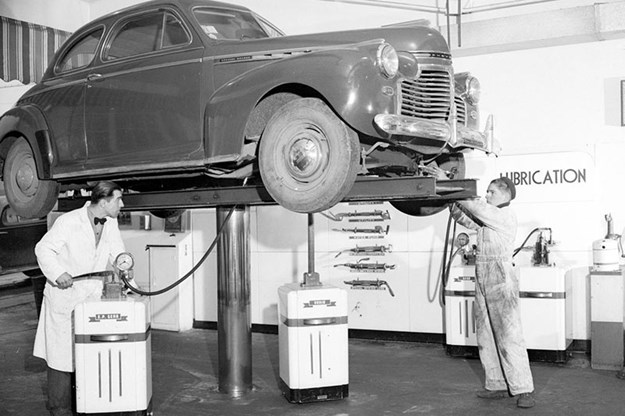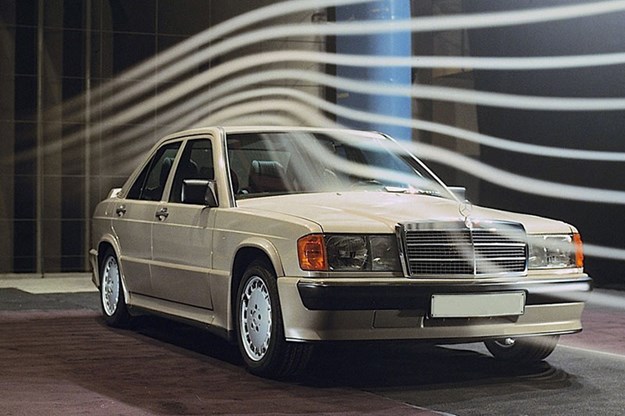New car tech + Chev V8s in planes + running in engines - Morley's Workshop 417



|
Stop-start technology, missing transfer-cases, Chev V8s powering planes - all that and more
MORLEY'S WORKSHOP
Killing auto trannies
I know I’m preaching to the choir a bit here, but geez I love old cars. Now, obviously, part of that is the big nostalgia trip we all take just by opening the garage doors, but another part of it for me is that I can trust old cars. I know that if an oldie has spark, fuel and compression, it’s pretty much obliged to run. But not so the malevolent, treacherous new bastard.
Not that I rely on any particular old car to get me from A to B on a regular basis, although I am still capable of doing crazy stuff like driving a 30-year-old LandCruiser to the tip of Cape York. But you know what? Twelve-thousand kays and two months later and my admiration for cars that don’t need computers continues to grow.
Anyway, the other thing that bothers me these days is the way technology is being manipulated to perform tasks it was never really designed for. Stop-start tech in new cars where the engine stops when you arrive at a red light is one example. In the old days, a car that stalled at the lights needed another turn on the idle-speed screw. Now it’s a selling point. And suddenly, the starter-motor is now starting the car 50 times in a peak-hour commute versus the once it used to. Yes, I know batteries and starter-motors have been embiggened to cope with this, but really?
Fact is, I’ve already met engineering types who reckon that stop-start is killing engines. They tell me that in some makes and models the turbo starts boosting long before the oil pressure has had a chance to build up, meaning that the turbo bearings are copping a hammering. At least one car-maker has had to re-design its turbocharger units to cope. Three times. I’d have diced stop-start and saved myself a whole bunch of grief.

But what about the fuel savings, you ask? Frankly, stop-start was only introduced to gain a better official number in independent fuel-economy testing; the tests that result in those little efficiency stickers on the windscreens of brand-new cars. In the real world, the savings are less impressive and would almost certainly be outweighed by the extra mass and expense of the bigger battery and starter motor. But since the testing has the car sitting idle for a percentage of the time, switching the motor off can gain the manufacturer a few precious tenths of a litre to be reflected on that mandatory sticker.
Another one that causes me to wonder is the current trend in off-roaders to do away with the transfer-case and the low-ratio gears it once provided. To ensure the end result can still climb out of a river, the car-makers are now using eight, nine and even 10-speed auto gearboxes with super-low first gears. But even those are no substitute for a transfer-case’s low-low ratio, so the next engineering short-cut has been to keep the engine on boost by – wait for it – slipping the torque converter in the tranny, allowing the car to crawl along and up and over the obstacle.
Now, this is fine if you’re only going to drive over one rock or log per hour. However, that’s not been my experience of off-roading, and I reckon somewhere like the high country or on the sandy inland tracks of Fraser Island, that torque converter is going to be slipping a lot of the time. Which, inevitably, means the production of heat. And lots of it. And as anybody who knows auto trannies will tell you, heat is the enemy. In fact, it roots auto trannies good and proper.
I’m not suggesting we go back to points and carburettors (really, I’m not) but I would like to see an end to technology being used as a stop-gap fix for poor design in the first place. Anybody else feel this way?
HERE'S MY TIP
Bag it and tag it

The wisdom of bagging up all the trim pieces and fasteners when you disassemble anything is well understood. But what do you bag them in? Torrens put me on to a good one recently: Freezer bags. Yep, they come in all sizes including small ones (which are perfect) and you can even write the contents on them on the handy white panel. I even found a brand that has a slide-lock (rather than the fiddly zip-lock) which is perfect for greasy paws. Heck, you can even recycle them. And they’re cheap. Brilliant.
LETTERS
On a wing and a prayer
 Only one of these can fly. The rest are there because of their looks
Only one of these can fly. The rest are there because of their looks
In Morley’s Workshop in issue 414 he talks about alternative uses for Chev engines. Here’s one I came across a couple of years ago: While waiting to go up in a glider at Benalla I heard a tow-plane flying past that had a distinctive exhaust sound. Sure enough, it had a Chevy LS motor in it.
According to the people at the gliding club, it was all part of a CASA-sanctioned trial. Seems the short temperature-cycle experienced by the average tow-plane is really hard on those big radial engines. I guess the big issue is relying on a water cooling system and all the problems it could present.
Adrian Cosgriff,
Email
Hey Adrian, believe it or not, but I was told about this LS-powered plane by a mate just in the last few months. I reckon we should track the bloke and his plane down and have a look-see. In the interests of science, of course. And since Guido is a closet plane nerd, I reckon we could talk him into giving us a few pages to examine what must have been a very interesting conversion from Commodore SS to fixed-wing tow-plane.
You’re right about the liquid cooling system adding complexity, and if there’s one thing that aero engineers love, it’s the KISS principle. That said, plenty of dedicated aero engines have, in fact, been liquid-cooled, including the mighty Merlin V12 that helped win World War 2 (see next letter) which had two separate cooling systems; one for the engine, the other for the intercooler (in supercharged form). But I reckon the low weight, excellent power-to-weight ratio and low-stress nature of the alloy LS V8 would make it a monty for a grunty little plane that can tug gliders into the air day in, day out. I would presume the other changes CASA would deem necessary would be a switch to magneto ignition and a move to twin spark-plugs per cylinder.
It all makes sense to me, especially since the end result is bound to have a better exhaust note than the fart-in-a-bottle drone of a five-litre flat-four revving out to a mighty 2500rpm.
More plane old common sense
 Geez, you’d be really flying if you gave the Clevo its head
Geez, you’d be really flying if you gave the Clevo its head
Hey Morley, love your articles mate and happily peruse them whilst contemplating life going through nature’s motions as they call. In the last issue you wanted to know about some interesting repurposed car donks. Well, you’ll love this.
Every two years, the little country airstrip at Tyabb, on the Mornington Peninsula near where I live has an absolutely kick-arse airshow that pulls about 15,000 people. Two shows ago they had a local identity show off his just completed five-year project, a three-quarter-scale Spitfire (Supermarine, not Triumph!). And lacking both the space in the airframe and bucks to get a Rolls Royce V12 Merlin, he shoved a 351 Cleveland up its snout and went flying! The sound of this thing when he wound it up for take-off was awesome and a couple of full throttle runs overhead confirmed it was a thing of beauty and a joy to behold. But you could also not mistake that sound of our beloved Ford doing what it does best.
I’ve seen real Spitties and Mustangs running the Merlins and they rattle your innards when they start up but this was a sweet familiar sound that just made ya grin like an idiot! I’m pretty sure the boys at Broady never visualized their love-child executing barrel-rolls and mock strafing runs in the skies over Melbourne on a beautiful autumn day like that one.
Marc Williams,
Near Tyabb, Vic
I hope you just read the previous letter Marc, because it seems like using car engines in planes is a real `thing’ these days. While the LS in the previous letter is a nice lightweight unit, I reckon the cast-iron heft of the Clevo must have caused a few more headaches. Then again, it’s two-thirds of a V12 in a plane that’s three-quarters of a Spitfire, so maybe the maths adds up better than it looks on the surface.
Until you look at the Merlin’s specs, that is. Because that’s when you realise that it was 27 litres, weighed about 750kg and made just on 1300 horsepower at 3000rpm at sea level. The 351 Clevo, meantime, weighed about half as much and, in a tune that would be compatible with aviation requirements, would probably be good for about 300 horsepower. Okay, so the three-quarter-scale replica won’t be as fast as the real Spitfire and it won’t sound the same, but then it doesn’t have to defend Queen and country, does it?
By the way, a mate of mine has a backyard that faces the Tyabb airstrip, so I’m no stranger to sitting in his backyard in a deckchair, chilled beverage in hand watching the action unfold before me. And you’re dead right, Marc; it’s a ripper little air-show.
Two subjects, no waiting
 The bow tie suggests a valet style lube service – should add a few thousand kays to the engine’s life
The bow tie suggests a valet style lube service – should add a few thousand kays to the engine’s life
Two subjects got my interest this month: Running in engines and engines powering something other than a car.
I had company cars for over 30 years and always had some responsibilities in the bush. So, for me, it was straight out of the dealers and on to the open road, always varying speed for the first 1000km or so. I always booked the first service for the following week. After that it was full-on. Most of my cars were kept for at least 100,000km and often up to 150,000km. They used no oil and the older they got the quicker they went.
I once traded an EB Falcon with single-point injection and the dealer loaned it to another customer. It had 155,000km on it. When the customer returned it he asked what the hell was under the bonnet because he couldn’t believe how quick it was. The key, of course, is regular servicing. And why not, when the boss is paying?
On the subject of engines attached to a foreign body, one of the most scary and dangerous applications was owned by a mate on a neighbouring farm. This contraption consisted of a four-cylinder B-series (1930s Ford) engine complete with radiator and fan attached to a 600mm saw blade. A log was placed on the bench under the saw which was then lifted up to the spinning saw-blade. There was no safety shield and no clutch in case of a jam.
The engine was running at about 4000rpm so imagine a knotty green log about 150mm suddenly jamming the blade. The competition between the engine and the blade always encouraged me to be standing quite a distance away but always alert in case my mate finished up under the blade. This thing was mounted on a trailer so he often offered to lend it to me, but I found chainsaws to be much safer.
David Hughes,
Parkes, NSW
Gee, we’re getting a range of opinions on this running-in thing. But, David, I reckon yours is probably the one that most closely aligns with my own view on the subject. Take it relatively easy for the first couple of tanks, being careful to vary the cruising speed and making sure the engine is loaded (but not lugged) and then drop the oil and spin on a new filter. From there, as your experience shows, it should be plain sailing and, as the bloke who borrowed your car discovered, usually leads to a ripper of an engine.
The only thing I’d do differently is to give the donk an initial oil and filter change at about the 300km mark, just to get rid of any machining dross or swarf that might be floating around in there. But as we talked about in a previous issue, modern manufacturing techniques mean that factory-built engines don’t suffer from this these days. That’s what the car-makers will tell you, anyway.
As for the Ford-powered saw-bench, I can only agree with your sense of horror that anybody could build such a weapon of mass destruction. What the hell are people thinking? I mean, a remote farm is a dangerous enough place at the best of times, but to have a giant, unguarded saw blade turning at 4000rpm and then chucking logs at it beggars belief.
But you know what? Your mate is not alone. Somebody within my extended family (and not from my side… my parents drowned the stupid ones) also lives on a farm and also has a murder-death-kill machine next to the woodpile. This one consists of a saw-blade about a metre across and it’s powered by a 60-horsepower electric motor. I won’t let the dog near it even when it’s not running, and to see it in action (from a safe distance) is to realise that Darwin was really on to something. I’m just waiting for the day when somebody from Worksafe makes a surprise visit and throws Matey a big fine before crushing the damn contraption.
May the Force agree with you

Great read in the current issue regarding running in? Just an old war story from my limited experience on the subject driving cars that were not mine in a sense but did go pretty good at the time.
See, in the late 70s to the early 80s I was a Highway Patrol unit in NSW. My experience in the 80s was in the country, and manual V8s at the time were just all go. I recall about 1982, at a country station, the then-current Falcon XD was due for replacement and the new car was an XE 351 four-speed. My off-sider picked it up from the depot in Sydney and when arriving home stated: They said not to rev it too hard for two to five thousand kays or the first service. Yeah, me says.
An old boat-race mate says to me: Drive it like you just pinched it. Me did. About 10,000km down the track that 351 XE would redline in every gear, and with a sun visor, Police sign and blue bubble on the roof. Went like a shower of the proverbial. Redline it in first, snatch second and break traction. Top speed on the check-speedo was 221k/h. I must admit though, the air-condish belt was off `cause it went better without it. Didn’t have to pay for fuel and rubber as well.
Had a great time driving it until 35,000km when Sydney calls and says: Time to replace that car. I ended up with one of the last 2 XE 351 Falcons out of the Ford plant in Sydney – an auto, with an economy gauge in the dash! Got it home and I thought what a piece of shit this thing is. Scored a Porsche on the radar one day at 188k/h and me thinks, good one. Turned around to stop him and all I remember is a black dot getting smaller and smaller and the speedo on the XE says FLAT STICK at 184k/h. That’s just the difference between cars of that era. Obviously one built middle of the week and one built on a Friday or Monday.
Great reading Dave and keep up the good stuff, and a bit more on the old goers. We all have thoughts on how to run an engine in and what’s the best method, but in the end whatever works for you is good.
Denis Morton,
email
Jeez, it’s not often I agree with a member of the Highway Patrol. But hell Denis, why couldn’t all Highway Patrol officers be like you and understand the significance of a dude, his car and an open stretch of road? I reckon you’re the sort of bloke the Force needs both then and now as a means of injecting some reality back into the game. You don’t, for instance, strike me as the sort of fella who’d write me up for doing five over the limit on a sunny day in a proper piece of machinery with good tyres and plenty of brakes. `Cos we both know that’s no naughtier than scratching yer bum in church. And yet, here we are in a society where I can get busted by Robo-Cop for allowing my speed to creep up less than a speedo-needle’s width. How the hell did we allow ourselves to arrive at this point?
Anyway sounds like you made the most of the taxpayer’s dime back in the day. And 221 flat-oot with all that crap on the roof suggests the XE you were pedalling back then was a particularly fit one. But here’s where my own intel comes in.
See, my old man was a small-town NSW copper for three decades, including when I was growing up, so I have a bit of an insight into this stuff. And I can clearly recall going to Sydney with the old man to swap one police car for the next at the Police Garages in (I think) Redfern or somewhere near the academy at the time. This particular time we were swapping a HX Kingswood 202 for a brand-spankers HZ with a 253.
Now, I don’t know what those geniuses at the Police Garage had done to this 253, but it was the fastest damn 4.2-litre Holden I ever sat in. It made an evil kind of hissing noise at full pelt and the auto had obviously been tricked up a bit, too. We eventually swapped it for an XC Falcon 4.1 which was not half the car that HZ had been and was about 30km/h down on top-whack.
I’ve since heard yarns about the police mechanics pulling all sorts of strokes like turning the air-cleaner hat upside-down to get around the early pollution gear. I can also remember a VK Commodore Highway car in Albury back in the day that idled like it had a 30/70 bumpstick in it. Who knows? But given the huge differences in performance I saw, maybe they had their favourites or only had a fiddle when they had time.
My favourite cop-cars? Easy: The VK Chargers that were being used as Highway Patrol cars out of Cooma in the mid-to-late 70s. I was regularly ferried around in those and I can clearly recall the coffin-shaped centre consoles, the gear-driven check-speedo and, of course, the way those Hemi sixes used to throw you back in the chair. The Highway boys back then were in it for the fun and the cars and if they managed to book somebody doing something stupid, well that was part of the game. Unlike today, of course, where even the uniform boys and girls reckon the Highway Patrol heroes are on the nose.
Advance Ignition Fair
 Low octane fuel stopped this hot Herman coming here
Low octane fuel stopped this hot Herman coming here
Regarding the proud owner of the Mercedes-Benz 180E in your magazine who complains about a lack of performance… he does not seem to know what he is talking about.
Here’s the skinny: Advance the ignition timing by changing the resistor under the air-cleaner from five-degrees BTDC to 11-degrees BTDC. Mercedes knew that a lot of owners would not spend the money to use the higher octane fuel required for this advanced engine. `Ninety-two octane was good enough for my mighty FJ Holden, so it is good enough for these Euros’, seemed to be the prevailing attitude at the time.
So, Benz retarded the ignition for Australia. But high-octane fuel is not always available in the bush I hear you say. Well, add some octane booster. Fixed.
Prof Goodfuel,
Email
Hmm, interesting info there, Professor. Back in the day, Australia’s lack of 98-octane fuel kept us out of the game when it came to a lot of tasty cars that might otherwise have made it here. And I can well imagine a company like Mercedes-Benz taking a conservative stance on the issue and winding a few degrees of ignition advance out of an engine to make it live on 92-octane juice. I’ve seen plenty of high-stepping petrol engines grind to a slow and horrible death through the owner refusing to spend the extra few cents a litre on fuel with a decent octane-rating.
But can it really be as simple as changing a resistor conveniently placed under the air-cleaner? Mind you, stranger things have happened. And I’ll bet every 180E owner is, right now, heading for the shed to check under the air-box. So for them, I’ll ask the million-dollar question: What’s the standard resistor and what one does a chap or chapette need to liberate each and every one of the 180E’s rampaging stallions? Assuming they’re prepared to buy the high-octane fuel, of course.
The other reason this is so believable is that a very similar set of circumstances occurred a few decades ago in terms of diesel fuel. Australian diesel was chockers with sulphur and brands like BMW and Mercedes-Benz simply refused to sell their diesel models here as the sky-high sulphur levels would have killed the engines. Then a few years ago, the Australian Standard for diesel fuel was changed to force something like a ten-fold reduction in sulphur content. And that’s when we started to see all those hot-shot turbo-diesels moving into showrooms and on to the roads.
Dirty work
 Who knew a dak-dak engine could earn its stripes as o poo-pumper?
Who knew a dak-dak engine could earn its stripes as o poo-pumper?
Speaking of car engines doing non-car jobs, back in the 1960s when I was a little tacker, my dad drove a septic-tank cleaning truck in suburban Melbourne. Most of the competitors of the day had a petrol-powered pump they would lug off the truck and set up on the ground, to pump the "good stuff" from the customers’ septic tanks.
Dad’s truck had a VW engine mounted behind the cab of his Bedford truck which drove a system that produced a big vacuum within the tanker and this worked like a vacuum cleaner. It was his boss’ idea and made life easy.
I also remember the cars of the time. My uncle Harry had a 1957 Ford Customline, that Dad called the "growler" because of the big V8 sound, and my uncle Bill would buy a new car every year; a HD Holden in 65, VC Valiant in 66 and so on. Good times. I went on to have a number of beauties that I wish I still had; a HK Premier, HT Monaro, HQ Monaro, all V8s. If only I’d known what they’d be worth today.
Mark Petersen,
Email
Nothing on the nose about that for an idea. And yeah, when you think about it, it would make sense to have a permanently-mounted pump system that simply needed to be turned on, rather than set up and then switched on. I mean, it’s not like you can use the pipes and fittings for anything else on the weekend, is it? But I suspect the really clever part of the deal was the way the Dak-Dak engine created a vacuum in the whole tank rather just pumping the turds into the tank. It might even have kept the smell inside. Nah, you couldn’t be that lucky.
And I’m with your dad’s boss all the way in choosing a Volkswagen air-coolie, if only on the basis of its legendary reliability. After all, slurping up a year’s worth of somebody else’s crap isn’t a job that would be improved by having a mechanical breakdown at the half-way mark.
Meanwhile, it’s interesting that some people used to buy a new car every year isn’t it? It kind of seems like a pretty foreign concept these days even though cars have never really been cheaper in real terms than they are now. Mind you, if your uncle bought a brand-new HD Holden in 65, I can kind of understand him flogging it the next year. It had probably already started rusting.
As for selling a few cars over the years that you should have kept… welcome to the club. The contents of my shed suggest that I’ve bought quite a few more cars than I’ve ever sold and yet I still cringe when I think about a few of the beauties I let slip through my fingers when space, money or enthusiasm were running low. Or The Speaker of the House was about to make her annual head-count and I needed to thin the ranks quick smart. (I’m smarter than that these days; my storage shed is off-site).
TRIVIAL PURSUIT
Dumb and dumber

While we’re pursuing a common denominator of uselessness, I’m also be interested to hear what you lot think have been the most ridiculous technologies ever applied to a car. I’m thinking the CVT transmission that also features artificial `ratios’ or steps to make it feel less foreign. Trouble is, these steps also remove the CVT’s one true advantage. Bullseye, losers. Give me your thoughts.
Utterly useless

I’m on the hunt for the most useless automotive accessory of all time. I’m tempted by the plastic wheel trim, but I’d also award marks to those plastic bonnet guards that meant the car looked like shite while you owned it, but at least the next owner got a nice, chip-free bonnet. Unless the leaves and water trapped by the thing formed a nice rust trap. Answers to the usual address.
Write to Morley c/o uniquecars@primecreative.com.au or Unique Cars magazine, 379 Docklands Drive, Docklands, Victoria 3008
Unique Cars magazine Value Guides
Sell your car for free right here
Get your monthly fix of news, reviews and stories on the greatest cars and minds in the automotive world.
Subscribe

.jpg)









.jpg)




